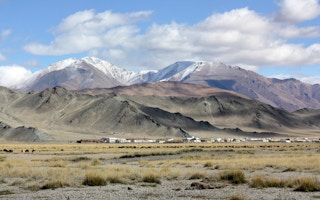Asia-Pacific nations are failing to halt the loss of natural forests and grasslands, the UN Food and Agriculture Organization (FAO) said on Tuesday, robbing people of their livelihoods and worsening environmental problems like desertification and climate change.
Forests and grasslands make up 58 per cent of the region’s land mass, but each year 2 million hectares (20,000 square kms) are degraded and rendered useless, Patrick Durst, a FAO senior forestry officer told a food conference in Ulan Bator.
Across the Asia-Pacific, 400 million hectares (4 mln sq kms) - an area equal to the combined size of India and Myanmar - are now in bad need of restoration, he said.
“We are already seeing strong negative impacts,” Durst told Reuters at the conference.
“
Across the Asia-Pacific, 400 million hectares (4 mln sq kms) - an area equal to the combined size of India and Myanmar - are now in bad need of restoration
Patrick Durst, FAO senior forestry officer
In China and Mongolia, over-grazing and poor land management mean herders increasingly have to give up feeding their livestocks and instead look for new jobs in fast-growing cities. Lost grassland boosts desertification and helps cause massive sand storms that sometimes carry as far as eastern Canada.
Meanwhile, illegal logging, farmland expansion and urbanisation drive deforestation across the region, especially in Southeast Asia.
Data from green group WWF show the greater Mekong region lost a third of its forests in the 35 years to 2009, even though deforestation rates have slowed somewhat in recent years.
Bucking the trend would form a basis for much needed economic development in the region, Durst said.
“Forest and grassland restoration can provide a range of ecosystem-derived environmental, social and economic benefits,” he said.
But solving the issue would require funding arrangements, stronger domestic law enforcement, strong political will and capacity-building, FAO said.
Reforestation gone wrong
In search of positive news, FAO said that while loss of natural forests continue, actual forest coverage in the region has increased over the past 20 years, mostly thanks to reforestation programmes in China, India and Vietnam.
But experts say problems have only gotten worse in many reforested areas because biologically diverse forests have been replaced with single species planted for commercial purposes, such as palm oil and rubber plantations.
In China’s Yunnan province, for example, experts say reforestation policies are partly to blame for a four-year drought despite being a rain-rich regions.
Less than 10 per cent of Yunnan’s natural forest remains, and recently planted commercial trees lack the ability to regulate groundwater flow. Because they are more water intensive than native trees they require irrigation, consuming a large share of the region’s water resources.
“Mixing trees with grass in dry areas would ensure their survival and protect biodiversity, isolate pests and limit forest fires,” said Jin Zhonghao, China director for WWF’s global forest and trade network.








